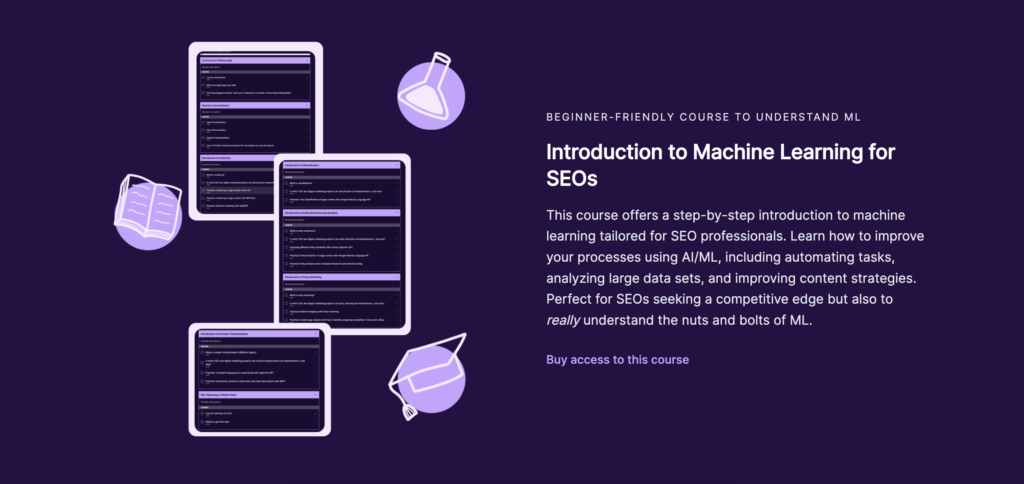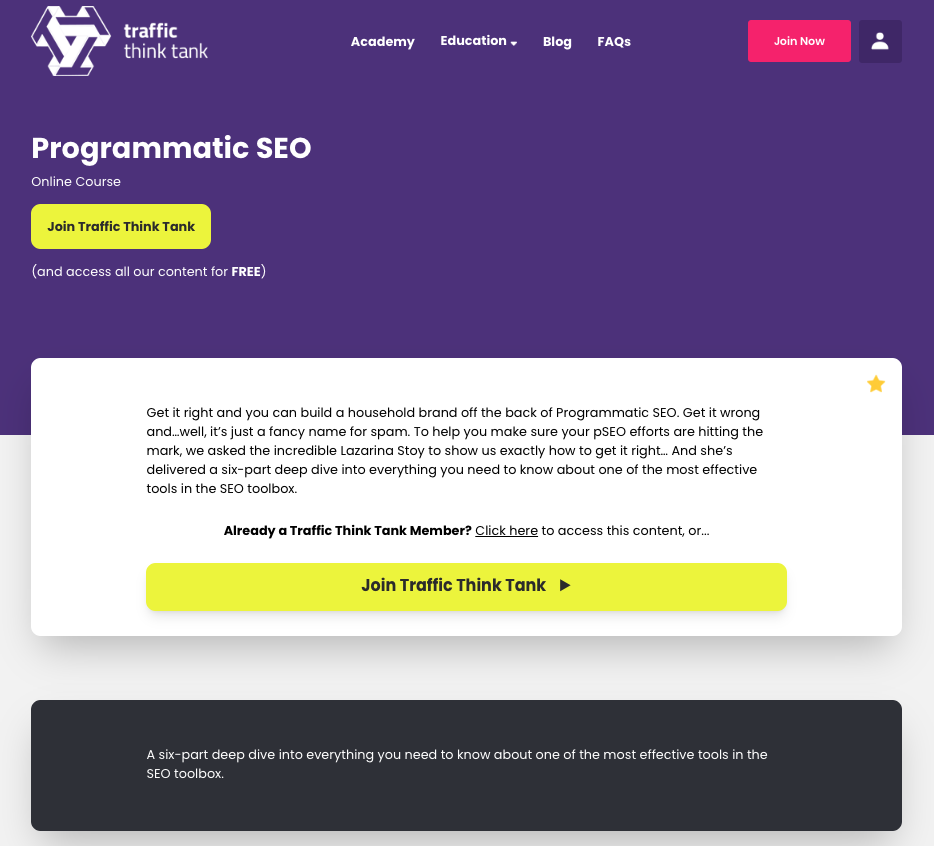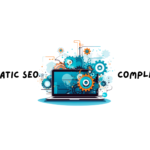Today, I want to talk about automation, and the two prevailing approaches: rule-based and AI-powered automation. Both have their unique strengths and applications, but understanding their differences is key to leveraging them effectively.
Mainly I want to take some time to better explain the different programmatic approaches, and help you how to incorporate them in a way that’s responsible in light of the brand voice and content quality, while also being helpful for the user to satisfy their search intent and helpful for the brand to gain better rankings.
Rule-based automation, operates on predefined instructions, a set-it-and-forget-it approach that’s straightforward but somewhat rigid. On the other hand, AI-powered automation (essentially Machine Learning enabled), employs machine learning to adapt and make decisions, offering a dynamic solution that evolves over time. This contrast between predictability and adaptability is what sets them apart and what I’ll explore further.
Rule-Based Automation: A Detailed Overview
What is rule-based automation?
At its heart, this form of automation operates on predefined rules and workflows. I’ve found that this approach caters well to processes that are consistent and don’t demand much deviation. Essentially, if A happens, then B must follow. This straightforward logic makes rule-based automation highly reliable for specific tasks.
For instance, we now have a greater than ever understanding of SEO best practices, however, not many companies implement these as standards. This can be achieved through rule-based automation.
Rule-based automation involves the creation of predefined instructions or conditions that dictate how specific tasks or processes should be executed without the need for human intervention.
What are the benefits and disadvantages of rule-based automation for SEO?
One of the primary advantages I’ve noticed with rule-based automation is it allows enforcing principles of operational excellence. Since actions are predefined, outcomes are consistent, leaving little room for unexpected results. This makes it incredibly suitable for industries where precision and consistency are paramount, and to a degree SEO enhancements done on a website fall into this category of work.
In terms of SEO applications, a rule-based approach is great as it enables:
- Consistency in SEO tasks and optimizations.
- Reduction of manual errors and oversight.
- Efficient handling of repetitive and rule-based tasks.
- Streamlined implementation of SEO best practices.
- Time savings, allowing for more strategic SEO efforts.
- Scalability for larger websites.
There are also limitations. The rigidity of rule-based systems means they struggle to adapt to new or unforeseen situations. Once deployed, these systems operate within their set parameters and lack the capability to learn or evolve over time. This necessitates manual intervention to update or tweak the rules as business needs change.
This can translate to some of these limitations, when incorporated in organic search enhancement systems:
- Limited adaptability to complex SEO challenges.
- Dependence on predefined rules, lacking flexibility.
- Difficulty in handling dynamic or rapidly changing content.
- Potential for oversights if rules are not comprehensive.
- Inability to handle tasks requiring nuanced judgment.
From my experience, implementing rule-based automation can significantly improve efficiency in tasks that are well-defined and static. But it’s also crucial to keep in mind that as the business environment evolves, these systems may require adjustments to maintain their effectiveness.
In essence, rule-based automation offers a solid foundation for enhancing operational efficiency in processes that are clear-cut and unchanging. Its predictability and reliability are its strongest suits, but its inability to adapt without manual intervention places a cap on its flexibility.
AI-powered automation: What you need to know
What is AI-powered automation?
AI-powered automation is a leap for software systems that learn from data patterns and make decisions with minimal human intervention. This ability to adapt and learn over time sets AI automation apart, allowing for increasingly sophisticated applications.
AI-powered automation utilizes artificial intelligence, including machine learning and natural language processing, to enable systems to make intelligent decisions and perform tasks autonomously based on data and algorithms, including generating the content itself.
What are the benefits and disadvantages of AI-powered automation for SEO?
At its core, AI-poweredautomation thrives on machine learning algorithms. These algorithms analyze massive datasets, identify trends, and predict outcomes. The power of machine learning lies in its ability to digest complex data and make informed decisions, evolving with every interaction. This adaptability means AI systems can improve their performance autonomously, becoming more efficient without the need for manual updates.
Consider the difference in managing customer service inquiries. Where a rule-based system might auto-reply with generic answers, an AI-powered system can analyze the sentiment of the inquiry, past interactions, and available data to provide personalized responses. This not only enhances customer satisfaction but also frees up human agents for more complex tasks that require empathy and nuanced understanding.
When applied in SEO applications, AI-powered automation enable:
- Speed
- Scalability
- Data-driven content approach in tasks like content writing, content enhancements, and translation
However, this sophistication can, in some contexts, come with its own set of challenges. Implementing AI automation requires a solid foundation of data, and the systems themselves can be complex and resource-intensive to develop.
Sometimes, these limitations can manifest, depending on the machine learning model used:
- hallucinations, non-factual content, errors, etc with generative AI systems
- incoherent translations or transcriptions
- sky-high costs costs depending on APIs used and number of tokens
- Additional costs needed for content editing and monitoring (human-in-the-loop)
To avoid some of the pitfalls mentioned, I suggest focusing on both understanding the technology and implementing it via a human-in-the-loop approach for time-saving, with a focus of time-saving yet with the care of making sure that standards are met for content quality, user experience, and SEO. I’m a big proponent on using this technology however believe that it’s still not at the stage where it’s ready to be used for mission-critical tasks.
When incorporating these approaches, focus on content strategy and prioritise based on SEO importance of the different elements where each programmatic approach should be applied. For instance, over-relying on LLMs like GPT without human review can lead to pushing misinformation, and lose of brand voice, not to mention worsened content quality and user experience, which will inevitably lead to lower rankings.
If you’re really serious about your ML journey as a search marketer, consider enrolling in my ‘Introduction to Machine Learning for SEOs’ course on the MLforSEO Academy.

Comparing Rule-Based vs. AI-powered Automation
Rule-based automation functions on a set of predefined instructions. It’s like following a recipe; if certain conditions are met, then specific actions are executed. This type of automation is fantastic for routine, repetitive tasks that don’t require much, if any, deviation.
On the flip side, AI-powered automation leverages machine learning to analyze data, extract insights, autonomously complete tasks, and possibly even make decisions, and continually refine its approach. Imagine it as a chef who tastes the dish as it cooks, adjusting the seasoning and ingredients based on experience and the diners’ preferences. AI automation excels in environments where adaptability and learning from patterns are key.
Here’s a brief breakdown:
| Feature | Rule-Based Automation | AI-powered automation |
|---|---|---|
| Decision Making | Based on predefined rules | Learns and adapts decisions based on data |
| Adaptability | Low, changes require manual updates | High, evolves with new information |
| Task Complexity | Ideal for simple, repetitive tasks | Handles complex, unpredictable tasks |
| Resource Requirement | Relatively low, simple infrastructure | Higher, due to computational needs |
Rule-based systems are easier and less costly to implement but hit a ceiling when dealing with complexity or changes in data patterns. AI-powered automation, while initially more resource-intensive, provides unparalleled flexibility and precision, making it indispensable for tasks requiring nuance and adaptation.
How to choose between rule-based and AI powered automation?
Understanding these applications, it’s evident that selecting between rule-based and AI-powered automation isn’t about one being superior; it’s about aligning technology with the specific needs and complexities of the task at hand.
Here are a couple of my go-to rules for choosing between rule-based automation and AI-powered automation:
- For any non-negotiables, such as programmable SEO best practices (e.g. title length, meta descriptions, headings) use rule-based approaches.
- For any high-stakes content components (main content body, or accessibility-enabling elements like alt text), always ensure there’s a human in the loop for fact checking, if you’re using an AI solution. Never rely fully on an AI-powered approach for a critical or highly complex tasks, without breaking them down into smaller components, and measuring the system’s output.
- Use AI-powered automation as a component of bigger systems, and as a way to improve speed in task completion, or generate better insights, quicker.
As technology evolves, the gap may shift, but for now, the choice hinges on the following factors: whether the task requires following a set of predefined rules or learning from data, costs, message criticality, and task complexity
Use Cases and Applications
Let’s go through some of the practical uses of rule-based automation and AI-poweredautomation in business, and specifically in organic search.
Rule-based automation applications in business and in SEO
Starting with rule-based automation, its stronghold lies in tasks encompassing clear-cut, predefined processes. Here are a few areas where it’s particularly effective:
- Data Entry and Management: Automating routine data entry tasks avoids human error and frees up time for more complex duties.
- Customer Service: Using rule-based chatbots for FAQs allows for quick and consistent customer responses.
- Invoice Processing: Automating the matching of purchase orders to invoices speeds up the accounts payable process.
Specifically in SEO systems or tasks, you can use rule-based automation for:
Rule-based automation involves the creation of predefined instructions or conditions that dictate how specific tasks or processes should be executed without the need for human intervention. Examples include:
- Generating titles, headings, and meta descriptions based on a dynamic template with insertion from the database
- Inserting internal links to specific pages, when certain phrases are found in the content or inserting links to product or product category pages at the mention of products or categories
- Captioning images based on rules – e.g. to include the product name and category in the caption alongside the description of the image
- Trigger structured data generation if certain phrases are mentioned, e.g. “frequently Asked questions, or HowTo
- Automatically submit URLs to search engines for indexing – there is already IndexNow, but a great alternative for IndexNow but for Google is URL monitor. It automatically submits URLs when a new URL is detected in the sitemap or in GSC that is not indexed via rule-based automation.
Rule-based automation is also used very frequently in programmatic SEO websites, in the context of pulling data from websites, or populating content via a pre-defined content pattern from a database. G2, for instance, uses rule-based automation for populating the grid of companies in the space (amazing user value to be able to see the entire landscape and filter based on company size) (see image below), amongst other things, like:
- populating listings, FAQs and titles based on a dynamic content patterns
- internal linking at scale

AI-powered automation applications in business and in SEO
In contrast, AI-powered automation thrives in environments where decision-making is more nuanced:
- Customer service enhancements: Generative AI can humanise many of the responses of company chatbots, as well as match customer problems better to the company’s database of help articles to improve the customer support
- Personalized Marketing: Utilizing customer data, AI can tailor marketing campaigns to individual preferences, enhancing engagement.
Here are some specific ML-based or AI automation applications in SEO:
- Automated content generation via LLMs like GPT4, or a content creation service like Cuppa which can be used at a minimal cost text generation, product descriptions, category descriptions, etc.
- Automated content enhancements, such as editing for a more concise read or for brand-aligned tone of voice
- Automated content translation via ML-based translation APIs, which can provide a good starting base for a localization expert
- Automated video and audio transcription via speech recognition Ml-based APIs like Google Cloud’s speech-to-text API
- Content summarization – using AI for shortening text, writing summaries or meta descriptions, or extracting Q&As from content
- Entity extraction or sentiment analysis
Key Takeaways
- Rule-based automation excels in environments with predefined tasks and processes, offering predictability and consistency, making it ideal for industries that require high precision without the need for adaptation.
- AI-powered automation leverages machine learning to adapt and make decisions based on data patterns, making it suitable for complex, unpredictable tasks that benefit from a system’s ability to learn and evolve over time.
- While rule-based automation is more straightforward and cost-effective for established, repetitive tasks, AI-powered automation offers flexibility and efficiency in dynamic environments, though it may initially require more resources and a solid data foundation.
- The application of rule-based vs. AI-powered automation depends on the specific needs and complexities of the task at hand, with rule-based systems being effective for simple, routine tasks and ML automation being better for speed enhancement, pattern generation and insights extraction.
Deciding between rule-based and AI automation isn’t about picking the superior technology but about matching the right tool to the job. If your task demands strict adherence to set rules or enforcing best practices, rule-based automation is your go-to. For challenges that require learning and adapting from data, AI automation steps up as the ideal candidate. It’s this strategic alignment of technology with task-specific needs that ultimately drives efficiency and innovation in automation strategies. Remember, the goal isn’t just to automate but to automate smartly.


